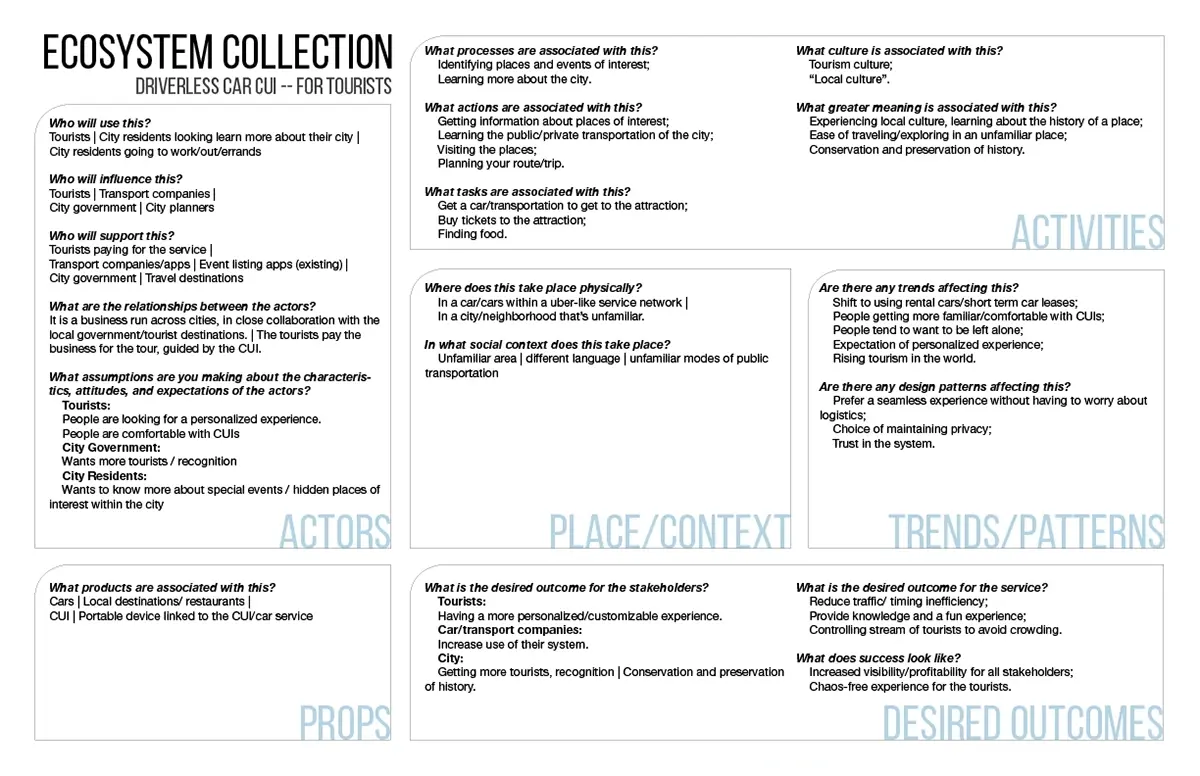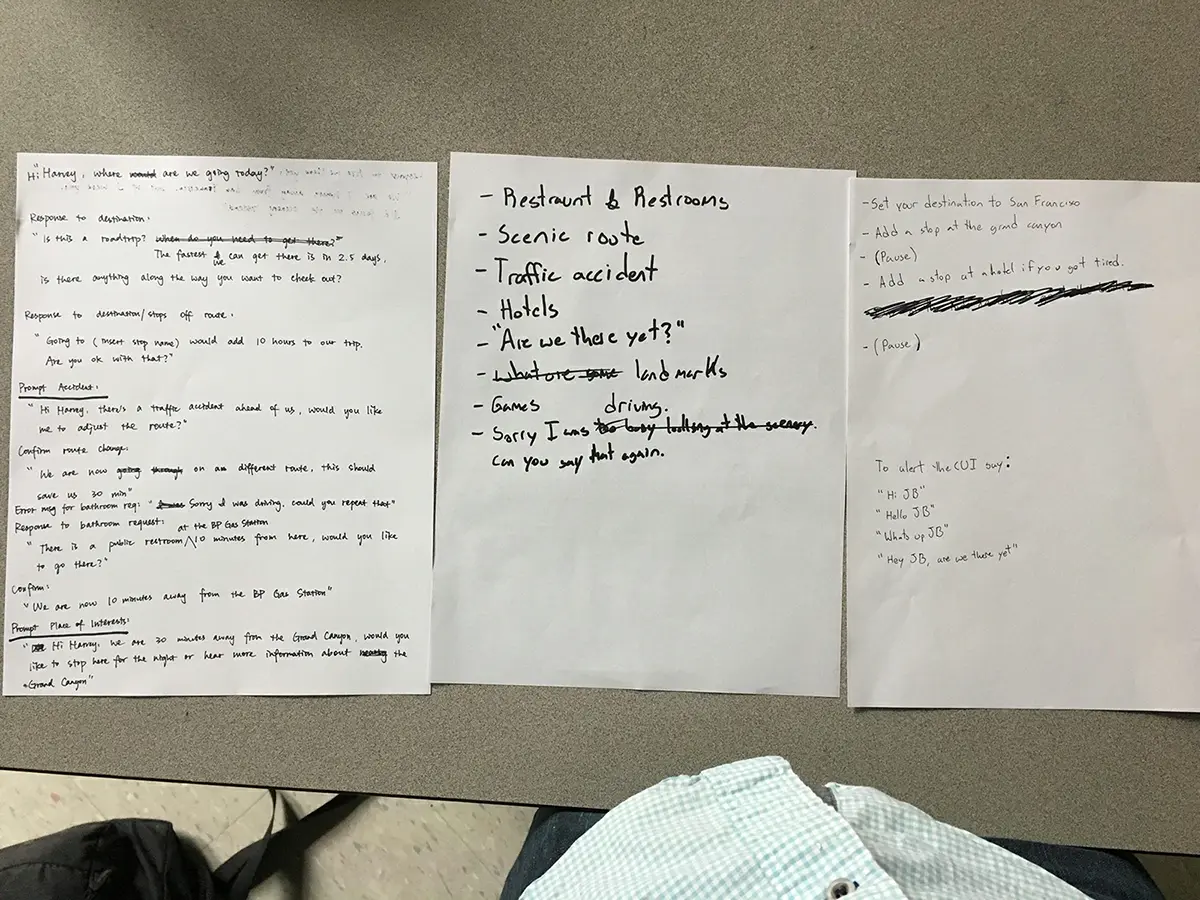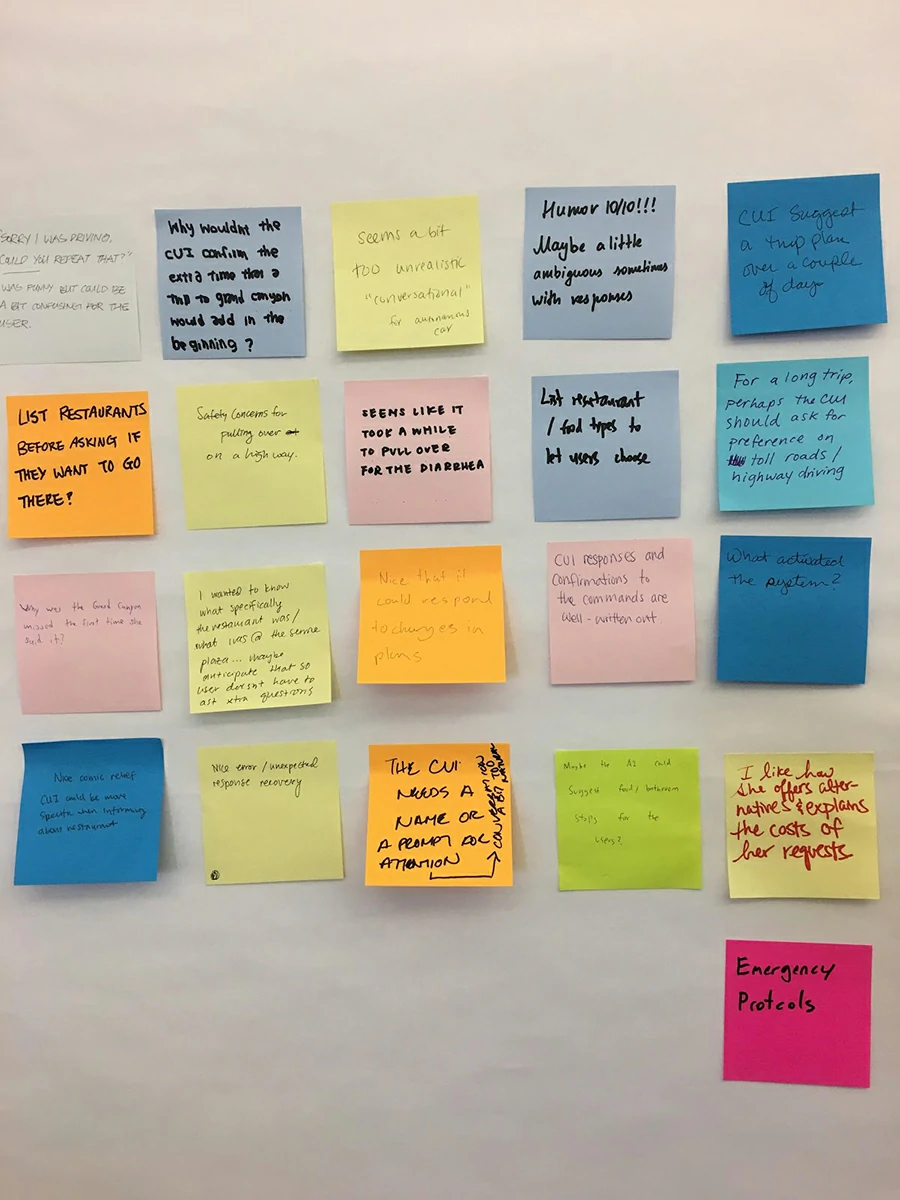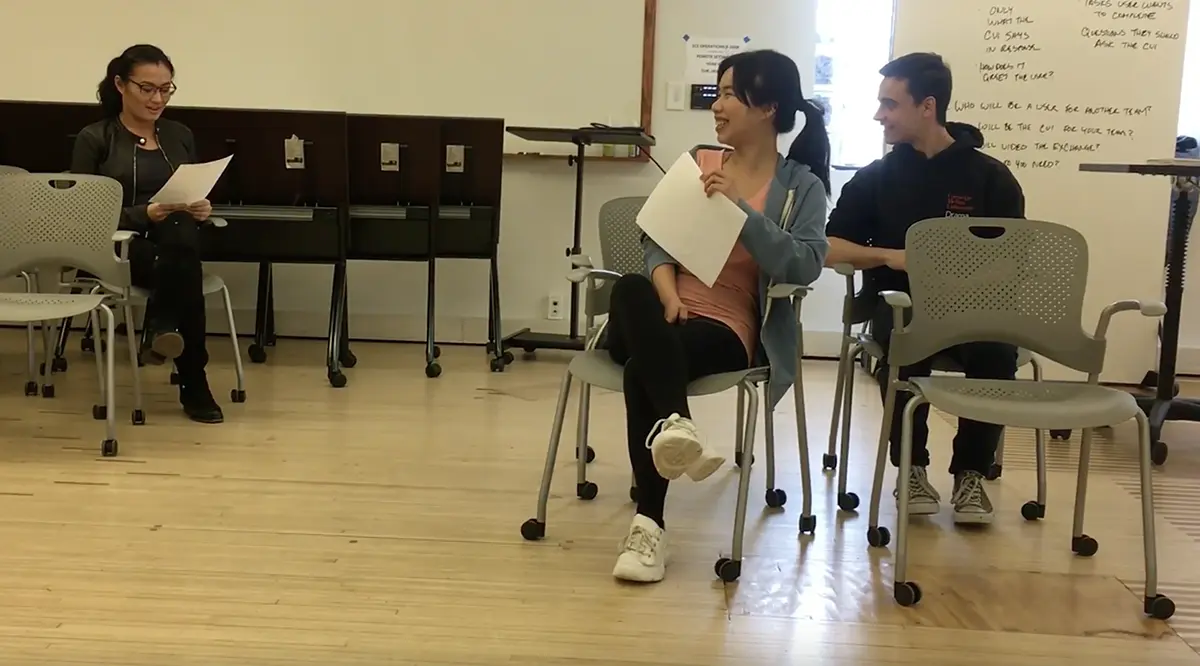In-Car CUI
Make Travel Plans with Avery, Your New In-car Voice Assistant
Intent and Process
Nowadays, Conversational User Interfaces (CUI) is getting increasingly popular. In this project, our team proposed an in-car CUI within a self-driving car. After some discussion, we decided to limit the scope of our design to focus on travelers and tourists. To decide on which functions should this CUI have, we needed to come up with scenarios and analyze where is a good place to intervene. Therefore, we started by mapping out typical users, stakeholders, and their expectations.
User:
Tourists: Learn about and see more of the place they are visiting without worrying too much about logistics, or being confined to a plan.
City Residents looking to discover: Discover new niche areas of the city.
City Residents on errand/work: Efficiently get from place to place undisturbed but may want information on more local events in some scenarios.
Stakeholders:
Car Sharing/Renting/Transportation Companies: More repeat customers coming back for convenience and safetyEvent Hosts: Raise awareness and attendance of their events.Tourist Attractions: Target potential visitors and boost popularity and customer satisfaction
City Government: More efficient traffic and city publicity.

Scenarios
Competitive Analysis
CUI Conversational Model
Experience Prototype
In class, we invited classmates from other groups to play and react with our scenario. Our team received valuable feedback for the CUI functions, as well as interaction patterns. For example, some suggested that the emergency stop should works immediately and safely; some pointed out places in our script that could be misinterpreted. We learned a lot from the experience prototyping and we utilized the feedback for our final video.


